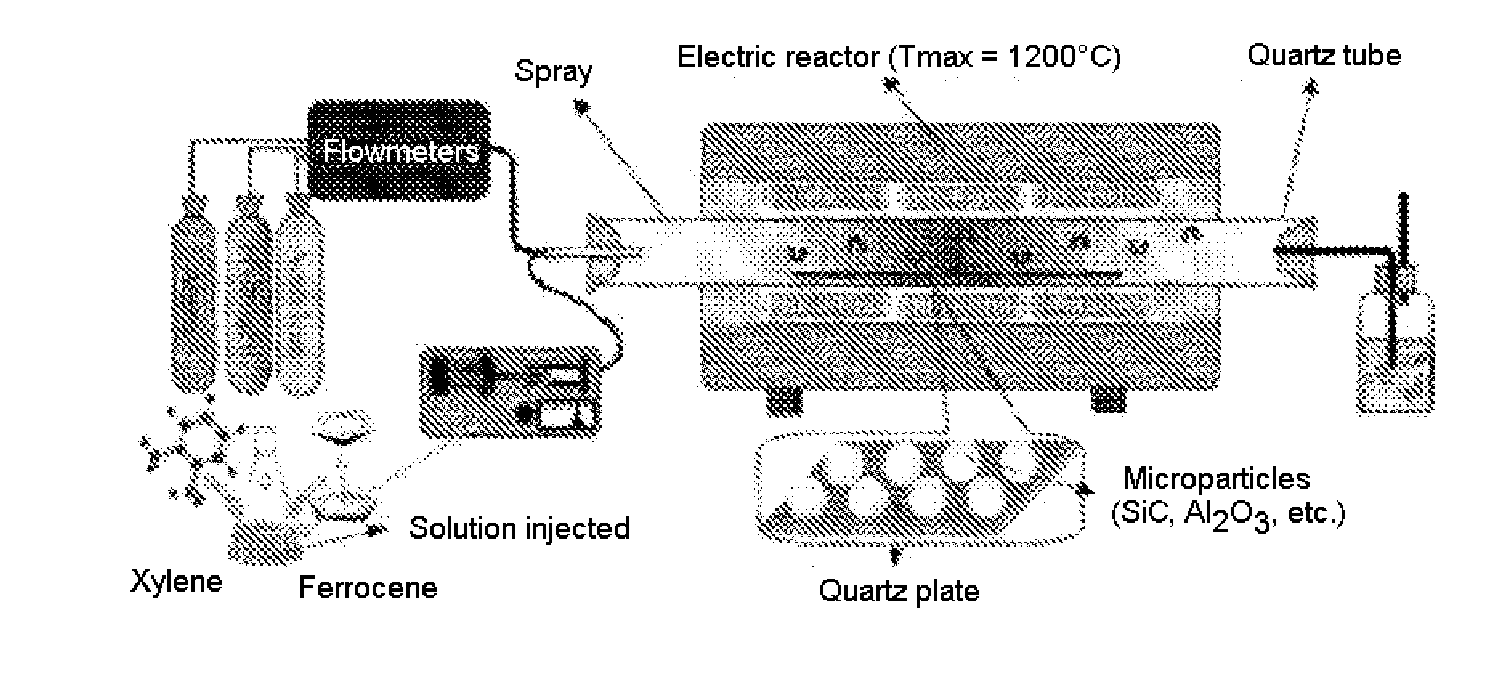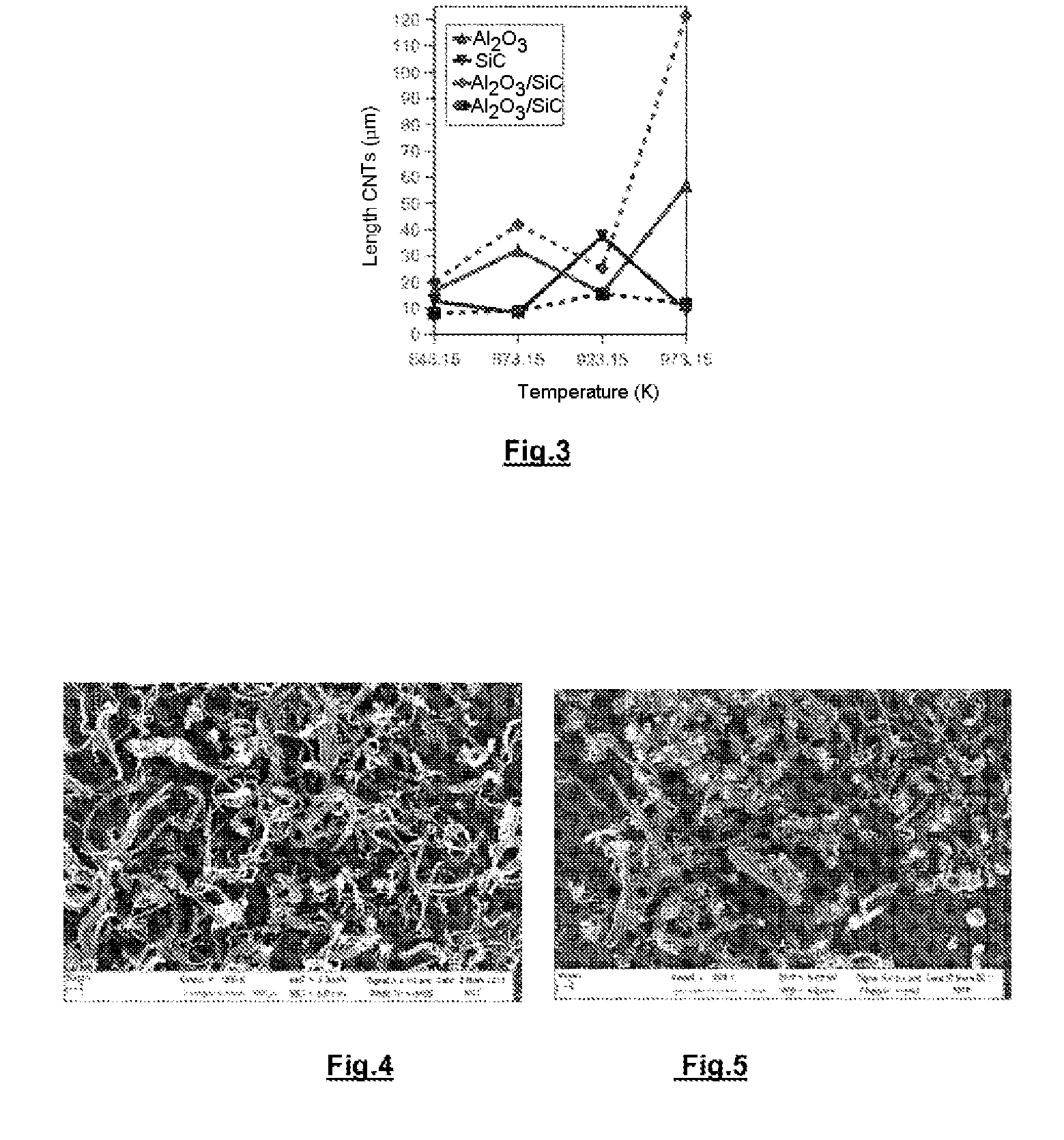Process for synthesizing carbon nanotubes on multiple supports
- Summary
- Abstract
- Description
- Claims
- Application Information
AI Technical Summary
Benefits of technology
Problems solved by technology
Method used
Image
Examples
example 1
4 / Conclusion of Example 1
[0112]The simultaneous growth of CNTs on two types of different and mixed substrates chosen from alumina fibers, alumina particles, the fibers of material comprising at least one silicon atom and the particles of a material comprising at least one silicon atom (for example, a mixture of alumina and silicon carbide microparticles) exhibits significant beneficial effects on:[0113](i) the yield of the process for growth of CNTs by aerosol CVD (Mean increase in the weight yield, whatever the conditions of synthesis, of greater than 25%);[0114](ii) the diameter of the CNTs (Mean increase of approximately 20%);[0115](iii) the length of the CNTs (CNTs approximately 20 μm longer on average on alumina and 5 μm shorter on average on SiC);[0116](iv) the rate of growth (Increase of 72% on average in the rate of growth of the CNTs on alumina) and;[0117](v) the density of the CNTs (Increase of 43% on average in the density of the CNTs on silicon carbide and of 18% on aver...
example 2
Preparation of Dielectric Composite Materials
[0119]Compositions comprising (i) a mixture of particles covered with CNTs (5 different mixtures are tested) according to the invention and a PVDF polymer were prepared by employing an extrusion method which makes it possible to provide a uniform dispersion of the mixture of particles covered with CNTs in said polymer. First of all, the mixture of particles covered with CNTs, prepared as defined above, and the PVDF powder are dispersed in N,N-dimethylformamide (abbreviation DMF). The resulting mixture is subsequently treated by magnetic stirring overnight so as to obtain a precursor composite solution.
[0120]The precursor composite solution obtained above is subsequently applied to ceramic particles which are subsequently heat treated at 150° C. for 2 h.
[0121]Subsequently, the resulting composite particles are again mixed in a corotating, conical, twin-screw microcompounder (Micro 5 cm3, twin-screw compounder, DSM) at 200° C. for more than...
PUM
| Property | Measurement | Unit |
|---|---|---|
| Temperature | aaaaa | aaaaa |
| Temperature | aaaaa | aaaaa |
| Temperature | aaaaa | aaaaa |
Abstract
Description
Claims
Application Information
 Login to View More
Login to View More - R&D
- Intellectual Property
- Life Sciences
- Materials
- Tech Scout
- Unparalleled Data Quality
- Higher Quality Content
- 60% Fewer Hallucinations
Browse by: Latest US Patents, China's latest patents, Technical Efficacy Thesaurus, Application Domain, Technology Topic, Popular Technical Reports.
© 2025 PatSnap. All rights reserved.Legal|Privacy policy|Modern Slavery Act Transparency Statement|Sitemap|About US| Contact US: help@patsnap.com



